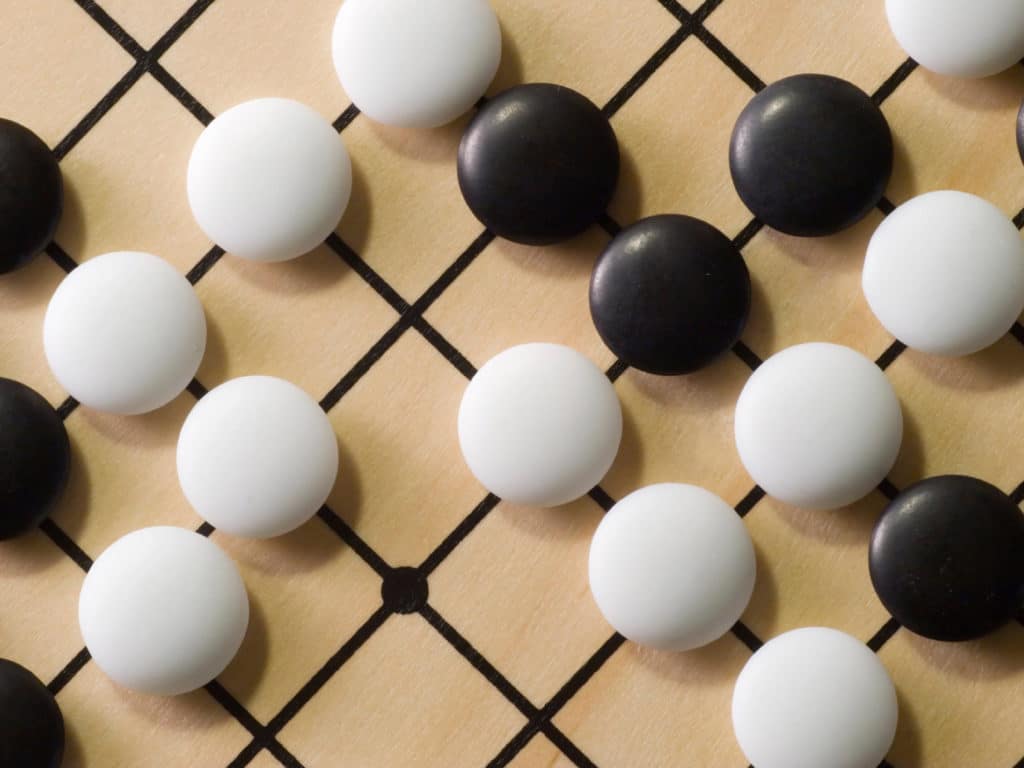We have lost another game to the AI – and what all of that has to do with marketing…
After loosing the first game against a computer in 1952 (noughts and crosses), followed by checkers in 1994.
Funny enough, with the help of AI we even solved checkers in 2007 – according to the researchers from the University of Alberta, Canada: “From the standard starting position, Black (who moves first) is guaranteed a draw with perfect play. White (moving second) is also guaranteed a draw, regardless of what Black plays as the opening move.”
Then of course there is the memorable victory by IBM supercomputer Deep Blue over Garry Kasparov in 1997 (it should be noted that Kasparov won the first round in 1996).
In 2014, another AI system called DQN taught itself to play 49 different video games, and beat humans at those. Go was our last bastion in the gaming world.
“But as simple as the rules are, Go is a game of profound complexity. There are 1,000,000,000,000, 000,000,000,000,000, 000,000,000,000,000, 000,000,000,000,000,000,000, 000,000,000,000,000,000,000,000, 000,000,000,000,000,000, 000,000,000,000,000,000,000,000,000,000, 000,000,000,000,000,000, 000,000,000, 000,000,000 possible positions,” Hassabis – one of the creators of Google’s AlphaGo – explained in a blog.
Hence, with quite some enthusiasm I watched the 5 games between Lee Sedol and AlphaGo during the last weeks. It has been all over the news and you probably heard about it, but what most people missed was the beauty of 2 moves in 2 different games. It is not just interesting that we lost Go, but rather how we lost it (and how we won a game).
Move 37
I am by no means a Go expert, but in game 2 AlphaGo made a move that confused not only the commentators -“that’s a very surprising move”, but also Lee Sedol. It was big surprise. Nobody thought of this move and it took Lee Sedol 15 mins of his time to consider his next move.
Move 78
Possibly even more beautiful then move 37 in game 2 was Lee Sedol’s counter in game 4. Again it took the human quite some time to consider his move, but Lee Sedol’s play in the middle of the board was so special that the machine only realised it a couple of moves later. It completely changed the whole game and finally lead to Sedol’s win in game 4.
Both moves together account for some kind of beauty in the 5 games between the AI and the best human player out there.
Wired magazine had a nice little comment in it’s article: “But think about what happens when you put these two things together. Human and machine. […] This isn’t human versus machine. It’s human and machine.”
Maybe coincidence, or exactly what Carrie Fisher says to the robot support group in IBM Watson’s latest commercial “Coping with Humans”.
And now let me close the loop: one of my favourite stories in marketing is also including a cognitive system working together with a human: IBM Interact’s ‘Self Learning’ capability and the marketer in a bank.
The story is simple: a bunch of marketers at a bank thought they had it figured out. They did their product bundling for a new account service with all kinds of gadgets (e.g iPods and other technical stuff). What they did not account for however was a prominent sub-segment in their selection. A group of people that did not need any gadgets. A group of people that wanted something easy and practical with their choice. One marketer at least tried to account for this somehow, by also offering a bundle with a product for gardening.
IBM Interact’s learning algorithm picked the significant interest in the audience up and changed the bank’s offering accordingly. The result? Very successful campaign outcomes and a lot of smiles on the bankers faces when they told me this story.
But the real interesting story will come in the near future when the AI cannot only review existing offerings and adapt those to the audience. The real value will arrive when the AI can suggest new offerings that we have not thought about.
Who knows – maybe soon we will have lost another game – marketing…

